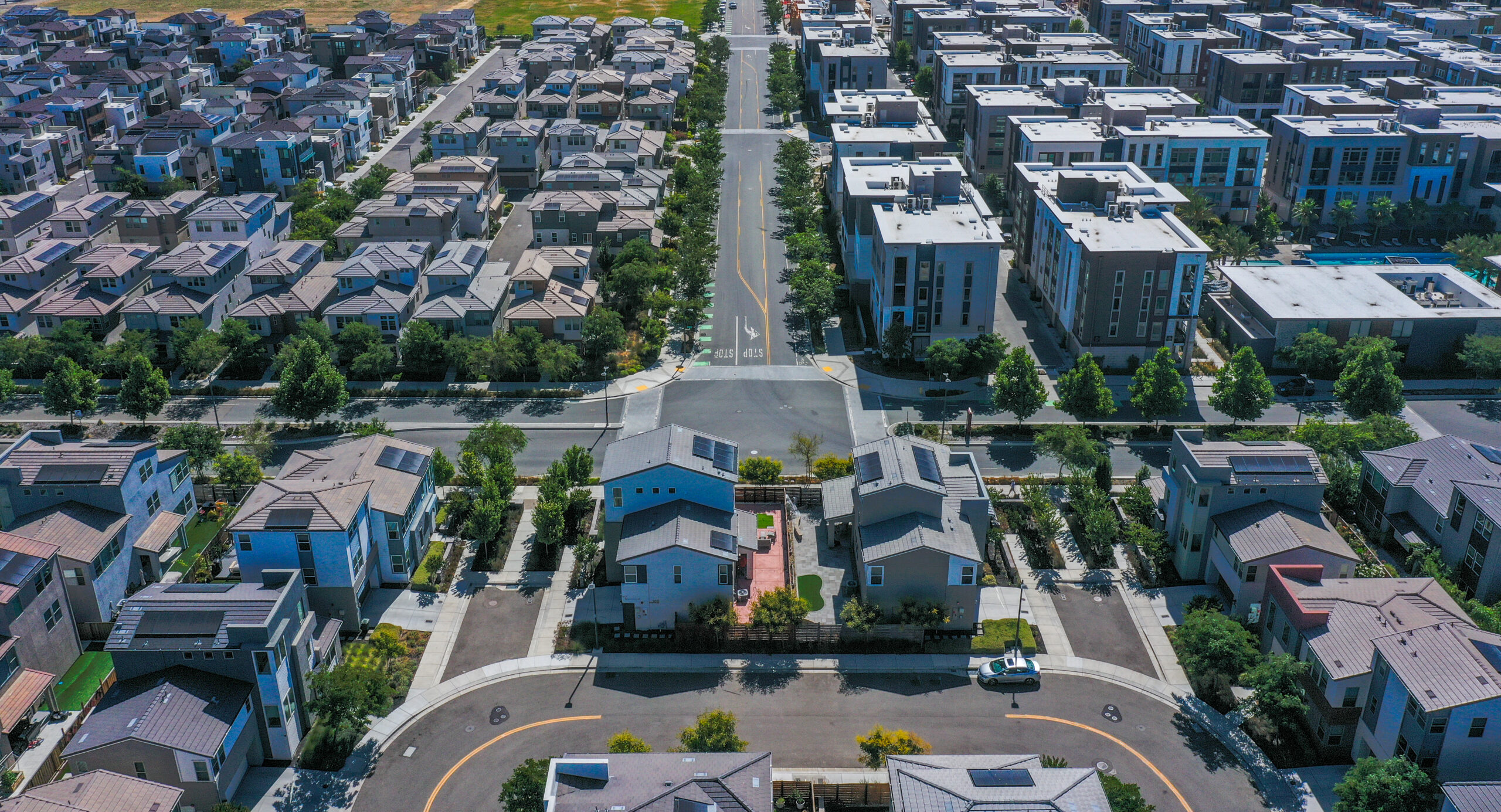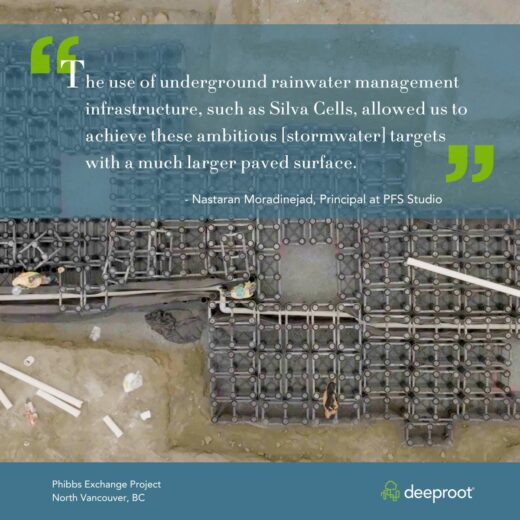Introduction
Green infrastructure has become a widely adopted component of stormwater treatment initiatives across the globe — but can GI be integrated even in the tightest-space built environments, where numerous priorities are competing for the same area?
Yes!
With a little creative design and the right strategic partners, GI can be utilized in just about any stormwater project. Silva Cells, for instance, have been the go-to solution for dual-purpose green infrastructure for over fifteen years: simultaneously providing stormwater treatment and soil volume benefits.
DeepRoot’s newest product, the Marino Cell, follows in this tradition of versatile GI tools: a stormwater storage module whose shallow profile, robust loading strength, and modular design allow for its use in just about any environment.
One of the most valuable features the Silva Cell and Marino Cell have in common is that each one performs like a traditional GI tool — similar to “daylighted” raingardens, for instance — without sacrificing buildable real estate. By functioning underground (while accommodating obstacles like utilities and shallow depth requirements), the systems allow for maximum built-environment flexibility. Why forfeit parking area or other public-realm enhancements to realize the benefits of low-impact development (LID) green infrastructure? Innovative GI solutions eliminate this mutually exclusive conundrum.

Silva Cells’ underground installation (and flexibility around existing utilities) creates built-environment flexibility.
Plants Instead of Pipes
“The building blocks of nature can also be used to form the foundation of healthy urban communities, manifested in design techniques that integrate water, land, and vegetation.”
– Thomas W. Liptan, Sustainable Stormwater Management
Landscape architect and green infrastructure consultant Thomas W. Liptan, in his illuminating book Sustainable Stormwater Management, explores the world of nature-based stormwater solutions: their implementation, advantages, and evolution over time. He notes that conventional thinking on stormwater management prioritizes whisking runoff away as quickly as possible — stormwater from this perspective is viewed as a nuisance waste product that requires traditional gray infrastructure to remove it from the clean built environment. Cities are largely constructed around this principle.
By utilizing only pipes and sewers to handle stormwater, however, we ignore a powerful at-source tool: nature. There are numerous advantages to adopting GI, including efficiency and affordability; likewise, by recognizing water as a useful, precious resource, we can repurpose it for on-location benefits (such as irrigation and biodiversity support).
This green strategy is becoming increasingly common as municipal planners and landscape architects embrace natural solutions, working with the environment rather than against it and in turn creating a more sustainable ecosystem.
But how do you fit everything in your design plans?

Dublin, California, utilized Silva Cells throughout the Boulevard community as an underground LID stormwater treatment tool.
Creative Green Infrastructure: The Best of Both Worlds
“Project designs, especially in urban areas, seldom prioritize landscape spaces when divvying up real estate. Functions such as buildings, roads, and parking lots typically get first (and even final) consideration when competing with uses such as landscaping and parks. Successful implementation of green infrastructure (Landscape Stormwater Management) relies on the designer’s ability to find utility in spaces remaining or created, and in finding opportunities for dual-use shared services.”
– Thomas W. Liptan, Sustainable Stormwater Management
One of the primary challenges for landscape architects and municipal planners who choose to adopt GI is how to solve the design puzzle — with numerous interests competing for the same finite space, how does the built environment get divvied up?
The Phibbs Exchange project in North Vancouver is a great example of this difficulty. One of the busiest transit hubs in the region, Phibbs underwent an extensive redevelopment project in the last few years. In addition to increasing commuter accessibility and safety at the station, GI was an important priority of the project from the outset: the city wanted to treat stormwater on-location using LID features — originally specified as raingardens.
The problem was bringing this vision to reality.
The team realized fairly quickly that the logistics didn’t add up: creating more space for commuters was in conflict with having large open areas for bioswales. Passengers couldn’t exit the bus into a raingarden. Simply stated, there wasn’t enough space to execute the original design plans.
This type of project roadblock is not uncommon — and it serves as one of the chief barriers to entry for incorporating green infrastructure design features (GI’s often prohibitive real-estate requirements). So, how was the Phibbs problem solved? By utilizing innovative GI solutions, in this case the Silva Cell.
The system is serving as an underground LID bioretention tool, slowing and managing stormwater at its source. By utilizing this strategy, the city achieved its stormwater goals while simultaneously building large, safe passenger platforms. The Silva Cells’ multifunctionality was also useful: it’s simultaneously providing enough lightly compacted soil volume for 17 new trees.
As noted by Nastaran Moradinejad, principal at PFS Studio:
“The Phibbs Exchange renewal project [originally included] sizable raingardens, [but] we realized that we did not have access to as much space for these raingardens are originally anticipated. The rainwater management targets, however, were not abandoned. The use of underground rainwater management infrastructure, such as Silva Cells, allowed us to achieve these ambitious targets with a much larger paved surface.”
Silva Cells have a track record of solving this type of impasse (including a similar application throughout the Boulevard community in Dublin, California). This creativity allows for the best of both worlds: nature-based LID features and a maximization of buildable real estate. As cited in an article by Janice Cessna, “Placing stormwater management underground frees up space for higher value land uses and greater return on investment.”







Leave Your Comment